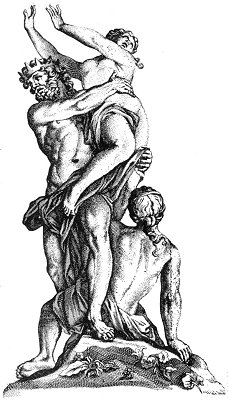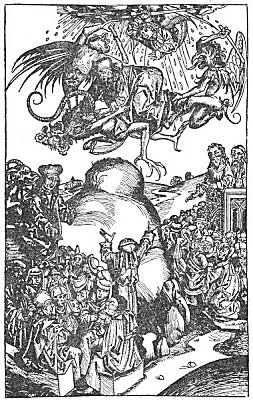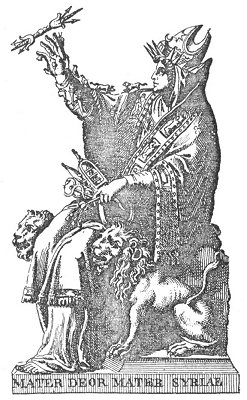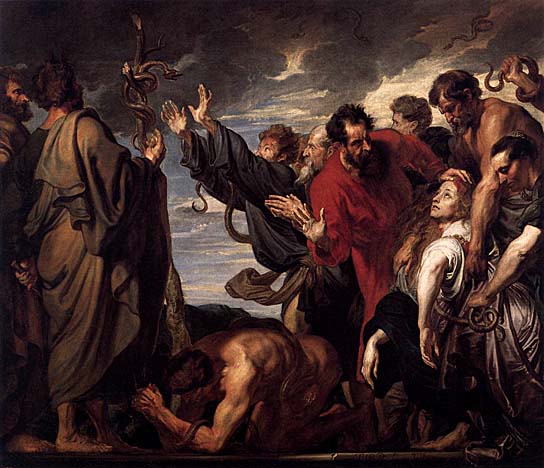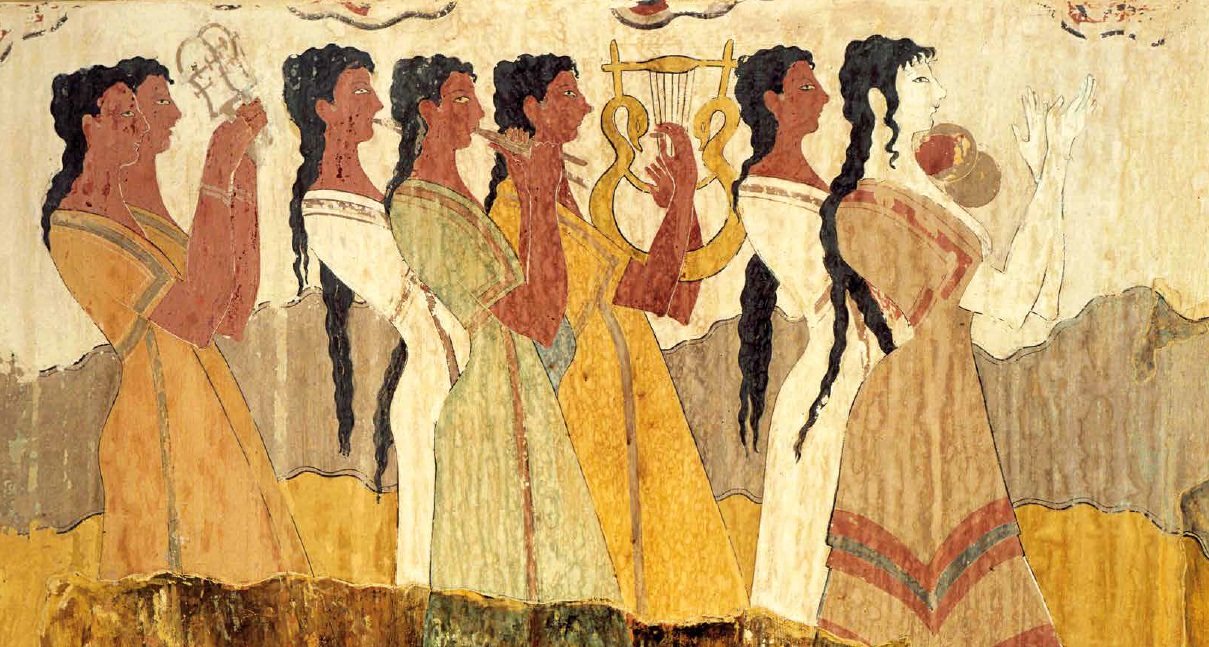The Christos of the Gnostics is the chief of the seven AEons, St. John’s seven spirits of God; the Nazarenes have also their seven genii or good Eons, whose chief is Rex Lucis, MANO, their Christos. The Sapta Rishis, the seven sages of India, inhabit the Sapta-Poura, or the seven celestial cities.
What less or more do we find in the Universal Ecclesia, until the days of the Reformation, and in the Roman Popish Church after the separation? We have compared the relative value of the Hindu Cosmogony; the Chaldeo, Zoroastrian, Jewish Kabala; and that of the so-termed Haeretics. A correct diagram of the Judaico-CHRISTIAN religion, to enforce which on the heathen who have furnished it, are expended such great sums every year, would still better prove the identity of the two; but we lack space and are also spared the necessity of proving what is already thoroughly demonstrated.
In the Ophite gems of King (Gnostics), we find the name of Iao repeated, and often confounded with that of Ievo, while the latter simply represents one of the genii antagonistic to Abraxas. In order that these names may not be taken as identical with the name of the Jewish Jehovah we will at once explain this word. It seems to us surpassingly strange that so many learned archaeologists should have so little insisted that there was more than one Jehovah, and disclaimed that the name origin-
Page 297
ated with Moses. Iao is certainly a title of the Supreme Being, and belongs partially to the Ineffable Name; but it neither originated with nor was it the sole property of the Jews. Even if it had pleased Moses to bestow the name upon the tutelar “Spirit,” the alleged protector and national deity of the “Chosen people of Israel,” there is yet no possible reason why other nationalities should receive Him as the Highest and One-living God. But we deny the assumption altogether. Besides, there is the fact that Yaho or Iao was a “mystery name” from the beginning, and never came into use before King David. Anterior to his time, few or no proper names were compounded with iah or jah. It looks rather as though David, being a sojourner among the Tyrians and Philistines (2 Samuel), brought thence the name of Jehovah. He made Zadok high-priest, from whom came the Zadokites or Sadducees. He lived and ruled first at Hebron , Habir-on or Kabeir-town, where the rites of the four (mystery-gods) were celebrated. Neither David nor Solomon recognized either Moses or the law of Moses. They aspired to build a temple to , like the structures erected by Hiram to Hercules and Venus, Adon and Astarte.
Says Furst: “The very ancient name of God, Yaho, written in the Greek [[Iao]], appears, apart from its derivation, to have been an old mystic name of the Supreme deity of the Shemites. (Hence it was told to Moses when initiated at HOR-EB — the cave, under the direction of Jethro, the Kenite or Cainite priest of Midian.) In an old religion of the Chaldeans, whose remains are to be found amongst the Neo-platonists, the highest divinity enthroned above the seven heavens, representing the Spiritual Light-Principle (nous) and also conceived as Derniurgus, was called [[Iao]] , who was, like the Hebrew Yaho, mysterious and unmentionable, and whose name was communicated to the initiated. The Phoenicians had a Supreme God whose name was trilateral and secret, and he was [[Iao]].”
But while Furst insists that the name has a Semitic origin, there are other scholars who trace it farther than he does, and look back beyond the classification of the Caucasians.
In Sanscrit we have Jah and Jaya, or Jaa and Ja-ga, and this throws light on the origin of the famous festival of the car of Jaga-nath, commonly called Jaggernath. Javhe means “he who is,” and Dr. Spiegel traces even the Persian name of God, “Ahura,” to the root ah, which
Page 298
in Sanscrit is pronounced as, to breathe, and asu, became, therefore, in time, synonymous with “Spirit.” Rawlinson strongly supports the opinion of an Aryan or Vedic influence on the early Babylonian mythology. We have given, a few pages back, the strongest possible proofs of the identity of Vishnu with Dag-on. The same may be adduced for the title of [[Iao]], and its Sanscrit root traced in every country. JU or Jovis is the oldest Latin name for God. “As male he is Ju-piter, or Ju, the father, pitar being Sanscrit for father; as feminine, Ju-no or Ju, the comforter — being the Phoenician word for rest and comfort.” Professor Max Muller shows that although “Dyaus,” sky, does not occur as a masculine in the ordinary Sanscrit, yet it does occur in the Veda, “and thus bears witness to the early Aryan worship of Dyaus, the Greek Zeus” (The Veda).

Moe is the founder of GnosticWarrior.com. He is a father, husband, author, martial arts black belt, and an expert in Gnosticism, the occult, and esotericism.


